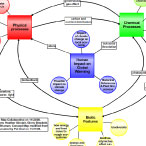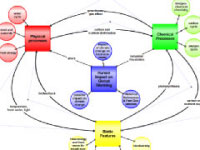|
|
Click Images to Enlarge
|
||||||||
Click Buttons for Presentation Videos & Maps |
About this Workshop:
For this workshop, 14 educators from the New England area were matched with ocean and climate scientists from the University of Maine to improve their collective understanding of how the ocean can impact climate change. [more]
About this Scientist:
Fei Chai studies nutrient transport from the interior ocean to the surface by ocean circulation and mixing processes and their impacts on the global carbon cycle. He does this by testing physical-biological models simulating important regions of the oceans (upwelling zones for instance). [more]













